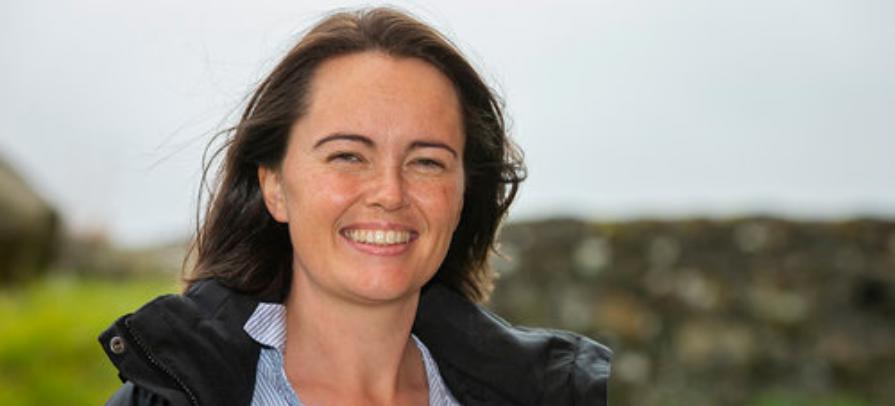Ann Sølvia Selmarsdóttir Purkhús vart ph.d. við Durham University
Mánadagin hin 1. mars 2021 vardi Ann Sølvia Selmarsdóttir Purkhús sína ph.d.-ritgerð við Durham University.
Heitið á ritgerðini er Burials and Landscapes during the Viking Age og snýr seg um gravir og landsløg í Føroyum í víkingatíð. Sí samandrátt niðanfyri.
Vegna Covid-19 støðuna var verjan á netinum. Próvdómarar vóru Sarah Semple, professari og deildarleiðari við Durham University (innanhýsis), og Neil Price, professari í fornfrøði við Uppsala Universitet (uttanhýsis). Verjan gekk væl og vardi umleið tveir tímar. Skoðsmálini vóru góð, og verjan varð staðin við teirri treyt, at smáar rættingar skuldu gerast. Endaliga útgávan av ritgerðini varð formliga góðkend í august 2021.
Í síni granskingartíð hevur Ann Sølvia verið innskrivað fyrst við University of Aberdeen og harnæst við Durham University, Department of Archaeology. Fyrsti vegleiðari hjá Ann Sølviu hevur verið Karen Milek, Dr. og lektari við Durham University, og annar vegleiðari hevur verið Mike Church, professari við Durham University. Uttanhýsis vegleiðari hevur verið Símun V. Arge, sáli, fornfrøðingur, ráðgevi og granskari á Tjóðsavninum.
Verkætlanin er høvuðsfíggjað av Granskingarráðnum, Fugloyar Kommunu og Hvannasunds Kommunu.
Ann Sølvia Selmarsdóttir Purkhús er nú í starvi sum fornfrøðingur á Tjóðsavninum. Ætlanin er, at ph.d.-ritgerðin verður útgivin. Hava fólk spurningar, eru tey vælkomin at seta seg í samband við Ann Sølviu á teldupostadressu ann@savn.fo
Samandráttur á enskum
This research project aimed to provide a new understanding of the Viking Age burials in the Faroe Islands, where they were located in the landscape relative to other Viking Age burials in the North Atlantic region, why those sites were chosen, and how we might be able to locate new burials. When I started this dissertation, only three Viking Age burial sites had been identified and two of them excavated in the Faroe Islands, neither of which had been fully published. This placed limits on our understanding of the world-views, beliefs and mortuary practices of the first inhabitants of the islands. Therefore, this project included a detailed analysis of the excavation archives of the excavated burials at Yviri í Trøð and Við Kirkjugarð, and used a new, landscape-based approach to better understand the locations of the burials relative to natural and human-made features. Comparative landscape analyses were also conducted at selected case study sites in the neighbouring regions of Norway, the Northern Isles of Scotland, and Iceland, in order to consider the similarities and differences of the Faroese burials, and whether the world-views and beliefs of the Viking Age settlers in the Faroe Islands were distinct from their neighbours.
In an attempt to identify new Viking Age burial sites in the Faroe Islands, as these are not visible in the landscape today, I developed a new, multi-method approach that focussed on the northern islands of the archipelago, utilising archival sources, aerial imagery, local oral landscape histories, field survey, geophysical survey, and finally test excavations. Although no new burials were confirmed, a number of new ‘probable’ and ‘possible’ Viking Age burial sites were identified. Moreover, my analysis of the two excavated cemeteries, and the new landscape analyses conducted for this project, generated new interpretations. The key outcome of my research makes it clear that the first settlers brought with them pagan burial practices common to Norway and the North Atlantic region, which were adapted to the unique landscape of the Faroes – a landscape which is so rugged that it resulted in village-based settlement patterns, communal infields, and communal cemeteries. I argue that the dead were in fact visible from settlements, landing sites, and the routes between them, and may have played important roles greeting newcomers, standing guard over infields and settlements, and visually communicating family affiliations, land ownership, and identities.
Mynd: Tjóðsavnið
